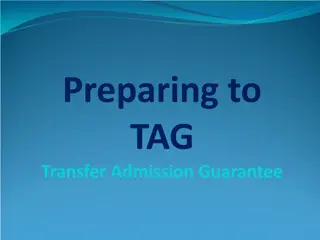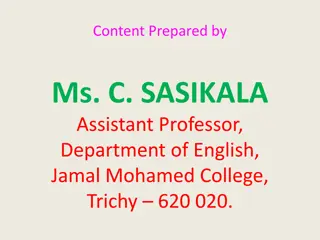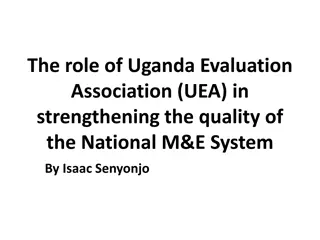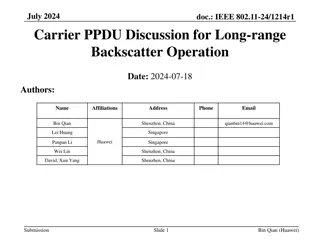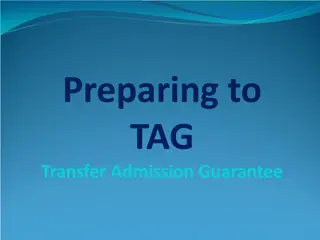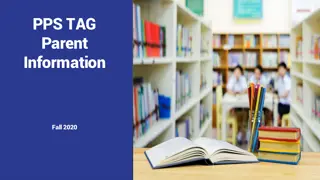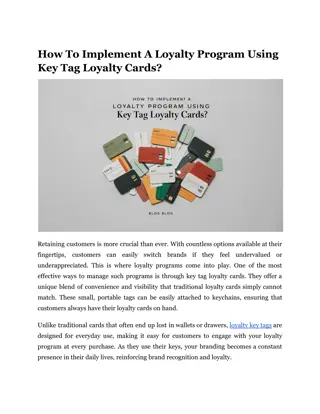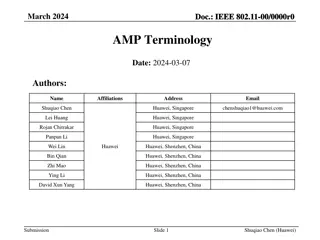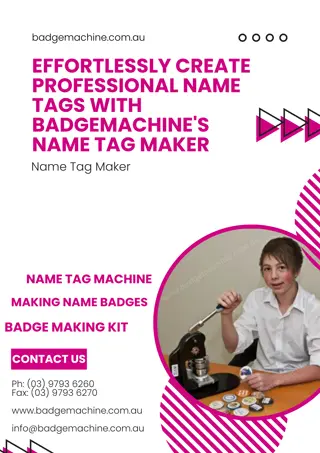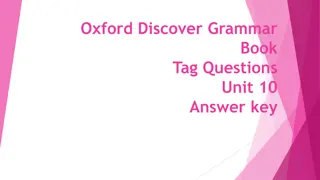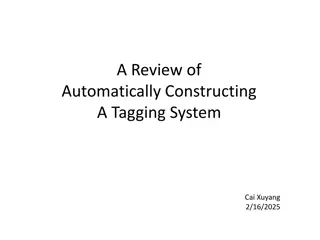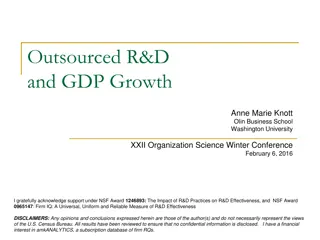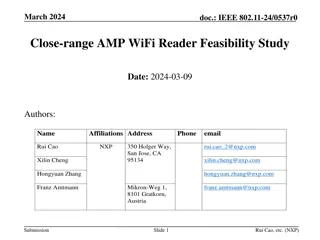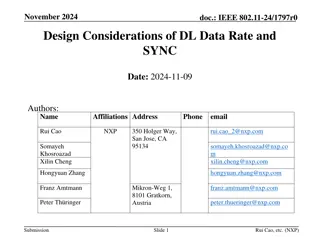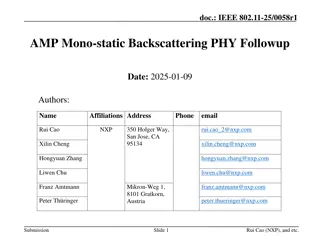AMP Tag Requirements for Close-range Backscattering
This document discusses the requirements and characteristics of AMP tags for close-range mono-static backscattering, focusing on clock characteristics, hardware limitations, and design requirements to meet IEEE standards.
Download Presentation

Please find below an Image/Link to download the presentation.
The content on the website is provided AS IS for your information and personal use only. It may not be sold, licensed, or shared on other websites without obtaining consent from the author.If you encounter any issues during the download, it is possible that the publisher has removed the file from their server.
You are allowed to download the files provided on this website for personal or commercial use, subject to the condition that they are used lawfully. All files are the property of their respective owners.
The content on the website is provided AS IS for your information and personal use only. It may not be sold, licensed, or shared on other websites without obtaining consent from the author.
E N D
Presentation Transcript
September 2024 doc.: IEEE 802.11-24/1237r0 AMP Tag Requirements for Close-range Mono- Static Backscattering Date: 2024-09-09 Authors: Name Affiliations Address Phone email NXP Rui Cao 350 Holger Way, San Jose, CA 95134 rui.cao_2@nxp.com Xilin Cheng xilin.cheng@nxp.com Hongyuan Zhang hongyuan.zhang@nxp.com Franz Amtmann Mikron-Weg 1, 8101 Gratkorn, Austria franz.amtmann@nxp.com Peter Th ringer peter.thueringer@nxp.com Submission Slide 1 Rui Cao, etc. (NXP)
September 2024 doc.: IEEE 802.11-24/1237r0 Introduction The clock characteristics of different AMP tags have been discussed and compared [3] Close-range mono-static backscattering mode was agreed as an important use case for AMP [1] In this presentation, more aspects of capability of mono- static backscattering AMP tags and the requirements to the standards definition are further discussed. Submission Slide 2 Rui Cao, etc. (NXP)
September 2024 doc.: IEEE 802.11-24/1237r0 Recap: Mono-static Backscattering Tag [1] AMP + UHF: one tag for both B2B and B2C applications 900MHz + 2.4GHz AMP Logic Antenna Z_ant Modul ator Memory RFID Logic B2B: sub-1GHz backscattering with ~10m range B2C: 2.4GHz backscattering with ~10cm range AMP mono-static backscattering tag should share common or similar RF/hardware requirements Submission Slide 3 Rui Cao, etc. (NXP)
September 2024 doc.: IEEE 802.11-24/1237r0 UHF RFID Tag Requirements EPC UHF Gen 2 standards [2] define the requirements for downlink/uplink communication with UHF RFID tags. Facilitates low-power and low cost deign The requirements are specified in several aspects: Clock characteristics: The reference clock frequency tolerance: less than +/- 10% 100,000ppm The reference clock jitter max. 1% Data rate: max DL 160kbps and UL 640kbps Max operating clock is ~2MHz Hardware wakeup settling time: max 1.5ms No energy operation time is ~100us small cap for energy storage Passive reflection with no mixer no or limited frequency shift Submission Slide 4 Rui Cao, etc. (NXP)
September 2024 doc.: IEEE 802.11-24/1237r0 AMP Tag Requirement (1) AMP Tag share similar hardware limitation Small energy cap Long wakeup settling time Clock characteristics No mixer and phase information Design requirement: Waveform/PPDU Every read event (TXOP) starts with a wakeup waveform of ~1ms One read transaction needs to be finished within one PPDU or TXOP read transaction meaning either tag status query or data reading Submission Slide 5 Rui Cao, etc. (NXP)
September 2024 doc.: IEEE 802.11-24/1237r0 AMP Tag Requirement (2) Design requirement: modulation OOK modulation only OOK bit encoding supports per-bit/symbol synchronization Both DL Data and UL backscattering e.g. PIE, FM0 or (differential) Manchester coding Clear indication of start of DL or UL segments Cannot rely on clock count for scheduled/polled events Not sensitive to excitation/energizer signal bandwidth Design requirement: data rate DL Rx rate is 250kbps max UL backscattering data rate is 1Mbps max Submission Slide 6 Rui Cao, etc. (NXP)
September 2024 doc.: IEEE 802.11-24/1237r0 Summary More detailed discussion of the requirement of UHF tag Clock characteristic, energy cap, wakeup settling, no mixer Discuss about the implied design requirement of AMP tag Wakeup time for each read event Amplitude modulation only Bit-level synchronization Maximum data rate for both DL and UL Other low-cost low-power AMP tags may share similar characteristics/requirements. Submission Slide 7 Rui Cao, etc. (NXP)
September 2024 doc.: IEEE 802.11-24/1237r0 References [1] 11-23/2038, Close Range AMP Backscattering in 2.4GHz [2] EPC UHF Gen2 Air Interface Protocol | GS1 [3] 11-24/1475, Discussion on ultra-low power timing clock Submission Slide 8 Rui Cao, etc. (NXP)
July 2024 doc.: IEEE 802.11-24/1237r0 SP Do you agree that 11bp defines at least one data rate of at most 250kbps for DL transmission? Submission Slide 9 Rui Cao, etc. (NXP)



